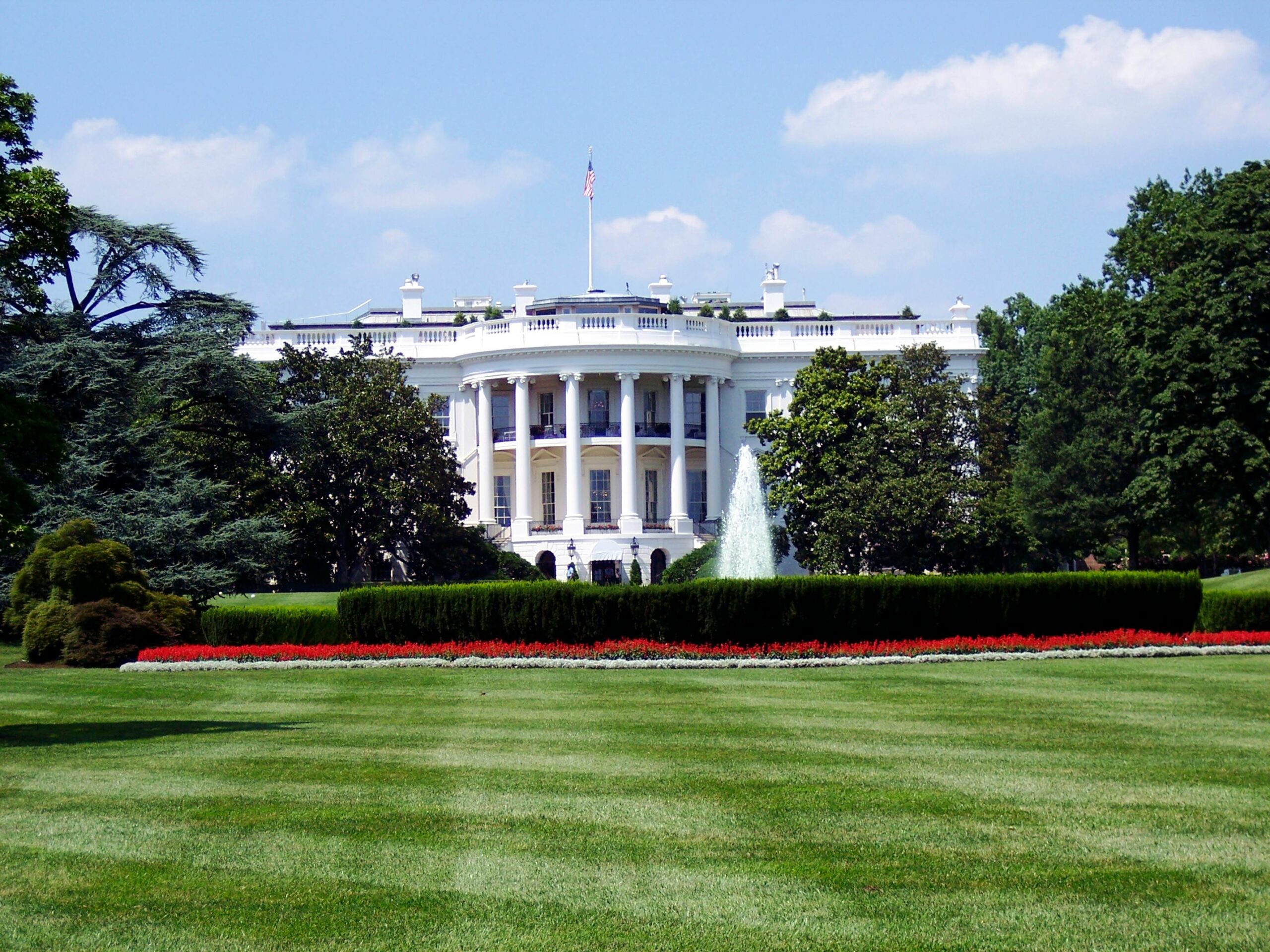The White House’s release of its 166-page digital assets policy report on July 30 represents the culmination of President Trump’s promise to make America the “crypto capital of the world,” yet the document reveals a careful balance between industry enthusiasm and regulatory pragmatism. While the report establishes comprehensive frameworks for cryptocurrency regulation, its omission of specific details about strategic Bitcoin reserves and implementation timelines suggests the administration’s crypto revolution may proceed more cautiously than many supporters anticipated.
Regulatory developments have driven substantial crypto market growth, with total market cap increasing 81% despite Bitcoin’s recent pullback
Comprehensive Framework with Strategic Gaps
The Presidential Working Group on Digital Asset Markets delivered what administration officials characterized as “the most comprehensive piece of work on digital assets that’s ever been produced,” spanning regulatory recommendations across market structure, banking access, anti-money laundering requirements, and international competitiveness. The document’s breadth demonstrates unprecedented federal coordination on cryptocurrency policy development.
However, the report’s most significant omission involves specifics about Trump’s promised strategic Bitcoin reserve and broader digital asset stockpile. Senior administration officials acknowledged that infrastructure development is “well underway” but provided no timeline, funding mechanisms, or operational details that industry participants eagerly sought. This gap between campaign promises and policy implementation reflects the complex realities of executing ambitious cryptocurrency initiatives within existing government frameworks.
The document emphasizes immediate regulatory actions that agencies can implement using existing authorities rather than waiting for comprehensive congressional legislation. This approach acknowledges that while the House passed the CLARITY Act to establish broader crypto market structure, Senate action remains uncertain and potentially time-consuming.
Treasury Secretary Scott Bessent’s accompanying remarks positioned the report as ending the “four-year siege” against digital assets under the previous administration, emphasizing the shift from enforcement-driven regulation toward innovation-friendly frameworks. This rhetorical framing reinforces the administration’s commitment to cryptocurrency industry development while acknowledging the regulatory challenges ahead.
Agency Coordination and Implementation Challenges
The report’s core recommendations direct the Securities and Exchange Commission and Commodity Futures Trading Commission to “immediately enable the trading of digital assets at the federal level” using existing regulatory authorities. This directive suggests the administration expects significant regulatory progress before congressional action on comprehensive market structure legislation.
The coordination requirements extend beyond financial regulators to encompass banking supervisors, tax authorities, and national security agencies. The document calls for “enhanced collaboration between the SEC and the CFTC” while recommending joint oversight frameworks that could require substantial inter-agency negotiation and resource allocation.
Implementation faces practical constraints that could affect timeline expectations. The CFTC lacks permanent leadership under Trump, limiting its capacity for immediate action on comprehensive crypto regulation. The SEC, despite Chairman Paul Atkins’ pro-crypto orientation, must balance cryptocurrency priorities against existing responsibilities for traditional securities markets.
The report acknowledges global competitive pressures while recommending international coordination to prevent regulatory fragmentation. This balance between American leadership and international cooperation requires diplomatic engagement that could complicate rapid implementation of unilateral policy changes.
Banking Access and Traditional Finance Integration
The document prioritizes enabling traditional banks to engage in cryptocurrency activities through clearer regulatory guidance and supervisory expectations. Recommendations include facilitating digital asset firms seeking banking charters and Federal Reserve master accounts while ensuring bank capital rules for crypto exposures remain proportionate rather than punitive.
This banking integration emphasis reflects industry recognition that sustainable cryptocurrency adoption requires traditional financial institution participation rather than isolated fintech development. The report’s principles-based approach to bank crypto activities suggests regulators will evaluate individual bank capabilities rather than imposing blanket restrictions.
The timing coincides with JPMorgan’s announcement of comprehensive Coinbase integration, demonstrating that major banks are proceeding with cryptocurrency services even before complete regulatory clarity. This private sector momentum may accelerate regulatory implementation as agencies respond to market developments.
However, banking integration faces significant practical challenges. Traditional banks require clear regulatory guidance, appropriate capital treatment, and operational frameworks before committing substantial resources to cryptocurrency services. The report provides direction but lacks specific implementation details that banks need for strategic planning.
Market Structure and Congressional Coordination
The report strongly endorses congressional passage of comprehensive crypto legislation, particularly the CLARITY Act that establishes clear regulatory jurisdiction between the SEC and CFTC while providing token classification frameworks. This legislative priority suggests the administration recognizes that executive action alone cannot provide complete regulatory certainty.
The document recommends clear digital asset taxonomy development, reporting requirements for market intermediaries, and cybersecurity standards for cryptocurrency platforms. These market structure elements require detailed rulemaking that could take months or years to complete even with aggressive regulatory timelines.
The report’s emphasis on decentralized finance accommodation suggests regulators will attempt to develop frameworks that support automated, non-custodial financial protocols rather than forcing traditional intermediation models. This approach acknowledges technological innovation while maintaining appropriate oversight for consumer protection and market integrity.
Congressional dynamics remain complex despite Republican control of both chambers. Cryptocurrency regulation involves multiple committee jurisdictions, and comprehensive legislation requires careful balance between innovation promotion and consumer protection that could complicate rapid passage.
Tax Policy and Consumer Considerations
The report includes significant tax reform recommendations that echo proposals from Senator Cynthia Lummis and other crypto-friendly legislators. Suggested changes include minimum thresholds for capital gains treatment of cryptocurrency transactions and revised approaches to staking rewards taxation.
These tax modifications could substantially improve cryptocurrency usability for everyday transactions by eliminating reporting requirements for small purchases. Current tax treatment requires calculating capital gains for every cryptocurrency transaction, creating compliance burdens that discourage routine usage.
The document also addresses consumer protection through enhanced disclosure requirements, fraud prevention measures, and education initiatives. This balanced approach suggests the administration recognizes that sustainable cryptocurrency adoption requires consumer confidence alongside industry growth.
However, tax policy implementation requires either congressional legislation or Treasury rulemaking that involves complex coordination with existing tax frameworks. The recommendations provide direction but require substantial additional work to become operational policy.
International Competition and Strategic Positioning
The report positions cryptocurrency leadership as essential for maintaining American financial system dominance and economic competitiveness. Recommendations include promoting dollar-denominated stablecoins, establishing American regulatory standards as global benchmarks, and preventing cryptocurrency activity migration to competing jurisdictions.
This strategic framing reflects concerns that regulatory uncertainty could drive cryptocurrency innovation and capital offshore, similar to how restrictive derivatives regulation previously pushed some financial markets to London or other international centers. The administration clearly views cryptocurrency regulation as economic competitiveness issue rather than purely domestic policy matter.
The document acknowledges international regulatory developments including European MiCA implementation and Asian financial center cryptocurrency initiatives. American policy development must consider these international frameworks to prevent regulatory arbitrage while maintaining appropriate oversight standards.
The emphasis on stablecoin regulation through the recently enacted GENIUS Act demonstrates one area where American regulatory leadership is already emerging. The report suggests this success could serve as template for broader international regulatory coordination.
Industry Response and Market Implications
Cryptocurrency industry leaders welcomed the report as validation of long-sought regulatory clarity while noting the absence of specific implementation details. The Crypto Council for Innovation characterized the document as offering “a constructive path forward that supports responsible innovation,” while acknowledging that success depends on “bipartisan legislative action, regulatory execution” and balancing innovation with financial integrity.
Market reaction has been cautiously positive, with cryptocurrency prices remaining relatively stable despite the lack of specific reserve fund details that some investors had anticipated. The comprehensive regulatory framework appears to have reassured institutional participants more than specific policy announcements would have.
Traditional financial institutions view the report as providing direction for cryptocurrency service development while recognizing that detailed regulatory guidance remains necessary before major operational commitments. The document establishes policy intentions without providing implementation specifics that institutions require for strategic planning.
The report’s emphasis on bringing cryptocurrency activity back to American markets could benefit domestic exchanges, custody providers, and financial services firms while potentially pressuring offshore platforms that previously served American customers through regulatory arbitrage.
Implementation Timeline and Realistic Expectations
Despite the administration’s ambitious rhetoric about ushering in the “Golden Age of Crypto,” the report suggests implementation will proceed through careful, measured steps rather than dramatic immediate changes. The emphasis on using existing regulatory authorities acknowledges the practical constraints facing rapid policy transformation.
The document provides policy direction without specific timelines, budgetary commitments, or operational details that would enable precise implementation forecasting. This approach may reflect the complexity of cryptocurrency regulation and the need for careful coordination across multiple agencies and stakeholders.
Success metrics for the administration’s cryptocurrency agenda remain undefined, making it difficult to evaluate progress or hold agencies accountable for implementation speed. The report establishes policy priorities without performance indicators or milestone targets.
The administration’s cryptocurrency policy development appears designed for sustained implementation across multiple years rather than immediate dramatic changes. This approach may disappoint supporters seeking rapid transformation while providing stability that institutional participants prefer for long-term planning.
As the Trump administration continues developing its cryptocurrency agenda throughout 2025, the July 30 report establishes comprehensive policy foundations while acknowledging the practical challenges of implementing transformative regulatory change. The ultimate success of America’s cryptocurrency leadership ambitions will depend on execution capabilities that extend far beyond policy declaration to encompass sustained regulatory excellence, international coordination, and private sector engagement across multiple election cycles.





